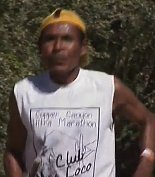Covertackle
Premiership Player
- Banned
- #1
Follow along with the video below to see how to install our site as a web app on your home screen.
Note: This feature may not be available in some browsers.
LIVE: Richmond v Melbourne - 7:25PM Wed
Squiggle tips Demons at 77% chance -- What's your tip? -- Team line-ups »


Above is given medical and scientific reasons, together with anecdotal evidence of large gains in aerobic efficiency and improvement when breathing only through the nose during exercise.any practical recommendations from all of this tig?
Its all written above. Are you suggesting I re post it in written form for you?why do they breathe through their nose though? it is generational, do they do it sub consciously or do they need to think to thunk about it to do it? you can't just tell me while i'm in the middle of a grand final to change my breathing all of a sudden...in times of stress the body will do what its best at
probably not...any actual studies on this?
settleWow!! Why don't you go to the top and start again....
i was on the phone and wasn't reading 100o words on that thing
I noticed one of the articles was from Mercola, that turns me off from the start.
What is 'Mercola'?I noticed one of the articles was from Mercola, that turns me off from the start.
Dr Mercola is to medicine what Stephen Dank is to the supplement industry.What is 'Mercola'?
Cutting edge and pushing the limits?Dr Mercola is to medicine what Stephen Dank is to the supplement industry.
